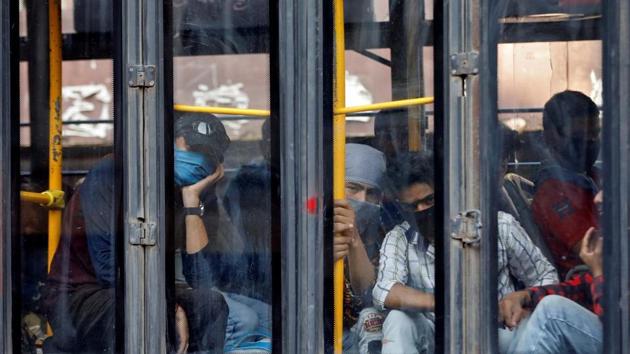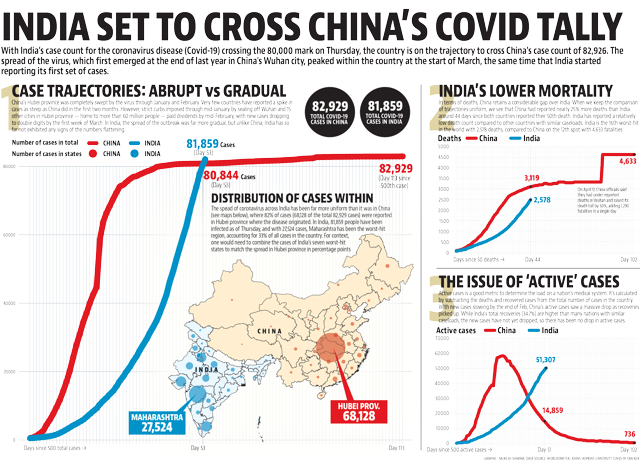Covid-19: What you need to know today
Many people infected by Sars-Cov-2, the virus that causes Covid-19, are asymptomatic, and that many people who show symptoms, have mild infections.
India will overtake China in terms of the number of coronavirus disease (Covid-19) cases sometime Friday. China was at 82,929 cases on Thursday afternoon and India 78,810, according to worldometers.info. HT’s dashboard shows that India ended the day with 81,859 cases. But the pandemic has followed entirely different trajectories in the two countries. For instance, the number of deaths in India continues to be low – on Thursday afternoon, it stood at 2,564. The corresponding number for China was 4,633.

The difference in death rates highlights what I’ve previously said (and more than once). Covid-19 doesn’t seem to be causing as many deaths in India as it is in other countries. Indeed, according to data from the Union health ministry, on Monday, when the total number of cases in India was 70,713 , of which 46,003 were active (according to the HT dashboard), only 2.37% of patients were in a condition serious enough to warrant treatment in intensive care units (ICUs), only 1.82% needed oxygen, and only 0.41% on ventilator support.
That fits in with what we already know – that many people infected by Sars-Cov-2, the virus that causes Covid-19, are asymptomatic, and that many people who show symptoms, have mild infections.
Click here for the complete coverage of the Covid-19 pandemic
To be sure, this is a subjective classification, which means the patients do not require oxygen, ventilators, or treatment in critical care units; anecdotally, some of those with mild cases, have suffered high fever, severe body pain, and are always tired (which means I should probably stop using the term mild).

Two other things this column has returned to regularly are testing and the reporting of data.
How and when data related to infections and deaths is critical – it helps experts track the spread and understand patterns; and it shapes the health policy response. India is still to get this right. HT started maintaining its own dashboard using information from covid19india.org and the health departments of state governments after it found that the Union health ministry’s data came with a lag.
Also Read: Biggest single-day spike as Delhi Covid cases cross 8,000
But it emerges that even at the state level, there is a considerable lag in reporting cases (because of delayed test results) and deaths (because hospitals do not always do the paperwork required). For instance, almost all the 42 deaths reported by Delhi in the past three days are old ones (and not deaths in the previous 24 hours). Unless this data is updated regularly and transparently, there’s little sense in talking of spikes in cases or deaths.
On testing, after a slow start, and attempts to defend the indefensible, India is finally testing aggressively. On Friday, it crossed the 2 million mark in tests. This translates into almost 1,540 tests per million of the population.
The health ministry has also asked states to conduct random tests, some of them pooled, every week and in every district. As India opens up (it should, starting May 17); as migrant workers return to their home districts; as rail services restart; and as life returns to normal, it is important to keep testing. All indications are that the number of cases will continue to rise, and perhaps rise even faster as we open up, but that shouldn’t be cause for alarm as long as the number of deaths stays low.
Again, as this column has repeatedly said, the only number to watch is the daily death toll.






